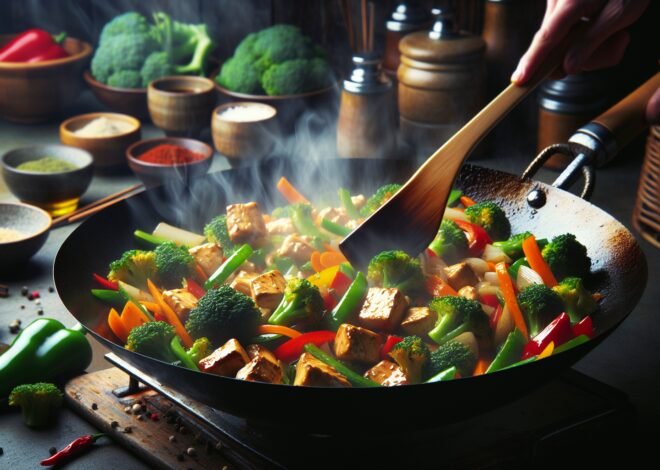
Best Tips for Storing and Freezing Baked Goods
Store and freeze baked goods effectively to prolong their freshness and flavor. Did you know that improper storage can shorten the shelf life of pastries by up to 50%? This post covers expert tips and techniques for keeping your baked treats fresh and delicious, ensuring you always have a homemade snack ready to enjoy. From choosing the right containers to understanding the best freezing practices, these insights will help you preserve the quality of your baked delights. Discover essential strategies that cater to various types of goods, ensuring they remain a flavorful part of your meals or gatherings.
Certainly! Below is a structured, engaging, and SEO-optimized piece based on the provided outline:
Best Practices for Storing Baked Goods
Storing baked goods correctly ensures their freshness and flavor. These sweet treats deserve the best care to maintain their deliciousness. From cookies to bread, each type of baked good has its own storage secrets. Let’s unpack these best practices to keep your creations tasting their best.
How to Store Cookies to Keep Them Fresh
Understanding Cookie Types
Different cookies have different storage needs. Soft cookies like chocolate chip need moisture, while crisp cookies like gingersnaps thrive in a dry environment.
Storage Solutions
- Airtight Containers: Use airtight containers for soft cookies to retain moisture. This keeps them chewy and delightful.
- Separate Crisp Cookies: Store crisp cookies separately in a container with a loose-fitting lid to maintain their crunch.
- Layering Technique: Place parchment paper between layers to prevent sticking.
Avoiding Common Mistakes
- Temperature Control: Avoid storing cookies in the refrigerator, as it can make them stale.
- Moisture Management: Add a slice of bread to the container with soft cookies. It helps them stay soft by absorbing excess moisture.
Tips for Storing Cakes and Cupcakes
Choosing the Right Methods
Cakes and cupcakes require special attention to maintain their flavor and texture. Proper storage techniques are essential whether they are frosted or plain.
Effective Cake Storage
- Plastic Wrap: Wrap unfrosted cakes tightly in plastic wrap. This protects them from air and moisture.
- Frosted Cakes: For frosted cakes, use a cake dome or cover them gently with plastic wrap to avoid ruining the decoration.
Cupcake Care
- Storage Containers: Use a cupcake holder or a tightly sealed container to keep them fresh.
- Frosting Safety: Ensure that frosting doesn’t touch the container lid by placing toothpicks in the cupcakes and covering them with foil.
Keeping Flavors Intact
- Room Temperature: Store cakes and cupcakes at room temperature for short-term storage.
- Refrigeration: If necessary, refrigerate them but allow them to reach room temperature before serving.
Preserving the Freshness of Homemade Bread
Understanding Bread’s Needs
Homemade bread is a staple in many homes. Its freshness can be prolonged with the right storage.
Effective Storage Practices
- Bread Box: Store bread in a bread box at room temperature to maintain its crusty exterior.
- Paper Bags: Use paper bags for artisan bread to allow air circulation, preserving its texture.
Avoiding Staleness
- Freezer Storage: For long-term storage, wrap bread in aluminum foil and place it in the freezer.
- Slicing Before Freezing: Slice the bread before freezing, so you only thaw what you need.
Reviving Stale Bread
- Oven Method: Revive stale bread by sprinkling it with water and heating it in the oven for a few minutes.
- Microwave Hack: For quick refreshment, wrap bread in a damp paper towel and microwave briefly.
How to Freeze Baked Goods Properly
Freezing baked goods is a fantastic way to extend their shelf life. Done properly, it preserves their taste and texture. Let’s delve into the techniques that ensure your treats emerge from the freezer just as delightful as when they were first baked.
Freezing Techniques for Pies and Tarts
Preparing for Freezing
Pies and tarts have their own charm, and freezing them can help retain that charm for months.
Proper Freezing Steps
- Cooling Completely: Ensure pies and tarts cool completely before freezing. This prevents ice crystals from forming.
- Wrap Tightly: Use plastic wrap and aluminum foil for double protection against freezer burn.
Optimal Storage Solutions
- Freezer Bags: Place wrapped pies and tarts in heavy-duty freezer bags for an added layer of protection.
- Labeling: Clearly label each bag with the date and type of pie or tart to keep track of storage time.
Thawing with Care
- Fridge Thawing: Thaw pies in the refrigerator to maintain their texture.
- Oven Refresh: For a crispy crust, pop them in the oven for a few minutes before serving.
The Right Way to Freeze Muffins and Scones
Freezing Preparation
Muffins and scones are perfect for freezing, making them convenient for quick breakfasts or snacks.
Effective Freezing Techniques
- Flash Freezing: Place muffins and scones on a baking sheet and freeze until solid before transferring to bags.
- Airtight Storage: Store in airtight containers or freezer bags to prevent freezer burn.
Maintaining Moisture
- Double Wrapping: Wrap each muffin or scone in plastic wrap before placing in a container.
- Labeling for Ease: Label with the baking date for easy identification.
Reviving Frozen Muffins
- Room Temperature Thawing: Allow muffins to thaw at room temperature.
- Oven Warm-up: Heat briefly in the oven for a bakery-fresh feel.
How to Freeze Cakes Without Losing Moisture
Preparation Techniques
Freezing cakes without losing moisture is an art. Following the right steps ensures they remain luscious and moist.
Proper Cake Freezing
- Cool Completely: Ensure cakes are completely cool before freezing.
- Wrap Well: Use plastic wrap and foil to lock in freshness.
Protecting Frosted Cakes
- Frosting Shield: Freeze cakes unwrapped until frosting is firm, then wrap.
- Label and Date: Clearly label wrapped cakes to track freshness.
Thawing Tips
- Gradual Thawing: Move cakes from freezer to fridge for gradual thawing.
- Room Temperature Finish: Allow cakes to reach room temperature before serving for optimal flavor.
Extending the Shelf Life of Baked Goods
Prolonging the life of your baked goods not only saves you time but also reduces waste. Utilizing the right tools and techniques can make a world of difference. Let’s explore methods to keep your baked creations fresh for longer periods.
Using the Right Containers for Baked Goods
Container Selection
Choosing the right container is crucial. It directly impacts the freshness and longevity of baked goods.
Types of Containers
- Airtight Options: Use airtight containers for most baked goods to prevent exposure to air.
- Specialty Containers: Consider bread boxes or specialized cake holders for specific items.
Enhancing Freshness
- Material Matters: Opt for glass or BPA-free plastic containers to avoid any chemical interactions.
- Size Appropriateness: Use appropriately sized containers to minimize excess air.
Tips for Best Results
- Reusable Bags: Invest in reusable silicone bags for eco-friendly storage.
- Labeling System: Implement a labeling system to easily identify contents and storage dates.
Vacuum Sealing Baked Treats for Longevity
Benefits of Vacuum Sealing
Vacuum sealing is a game-changer. It removes air, significantly extending the shelf life of baked goods.
Vacuum Sealing Tips
- Pre-Freezing Requirement: Pre-freeze delicate items to maintain their shape during sealing.
- Proper Sealing: Ensure a tight seal for maximum freshness.
Storage Longevity
- Extended Life: Vacuum-sealed items last longer, retaining flavor and texture.
- Space Efficiency: Saves space as items are compressed, maximizing freezer storage.
Releasing Seals Safely
- Avoid Crushing: Release seals gently to avoid crushing delicate pastries.
- Thawing Advice: Thaw frozen vacuum-sealed goods in the refrigerator for best results.
Expert Advice on Thawing Frozen Baked Goods
Thawing Techniques
Thawing frozen baked goods correctly is as crucial as freezing them. Proper thawing preserves their original taste and texture.
Thawing Methods
- Refrigerator Thawing: Best for maintaining structure and moisture.
- Room Temperature Thawing: Works well for smaller items like cookies and cupcakes.
Avoiding Common Pitfalls
- Patience is Key: Avoid rushing the thawing process as it can lead to sogginess.
- Reheat Wisely: Use an oven or microwave to gently warm items, enhancing flavor.
Reviving Baked Goods
- Crisp Refresh: Use an oven to revive the crispness of bread or pastries.
- Microwave Caution: Avoid over-microwaving, which can make items rubbery.
Engaging with these storage and freezing techniques will ensure your baked goods remain fresh and delicious, ready to delight at any moment. Embrace these methods to savor the fruits of your baking labor long after they’ve left the oven.
Conclusion
Baked goods should be completely cooled before freezing to prevent sogginess. Wrap them tightly in plastic wrap or aluminum foil to protect against freezer burn. For added protection, place wrapped items in airtight containers or resealable freezer bags. Label packages with the date to keep track of storage time. Thaw baked goods at room temperature or gently warm them in the oven for best results.
FAQ
How can I store baked goods to maintain freshness?
Store baked goods in airtight containers at room temperature to keep them fresh. Use resealable plastic bags or tightly sealed tins for best results. Keep them away from direct sunlight and heat.
What is the best way to freeze different types of baked goods?
Wrap baked goods tightly in plastic wrap or aluminum foil before placing them in airtight freezer bags. For items like bread and muffins, consider double wrapping to prevent freezer burn. Label packages with the date for easy tracking.
How long can baked goods be kept in the freezer before losing quality?
Most baked goods maintain their quality in the freezer for up to three months. Some items, like cookies and cakes, might last a bit longer but are best consumed within this timeframe for optimal taste.
Can I refreeze baked goods after they have been thawed?
It’s generally not recommended to refreeze thawed baked goods. The texture and flavor can degrade with each freeze-thaw cycle. Consume them after the first thaw for the best experience.
Is it necessary to wrap baked goods before freezing them?
Yes, wrapping is crucial to prevent freezer burn and retain moisture. Use plastic wrap or foil before placing baked goods in airtight containers or freezer bags for maximum protection.
How should I defrost frozen baked goods for optimal taste and texture?
Defrost baked goods at room temperature for the best texture. For a quicker option, use the microwave on a low setting, but avoid overheating to keep them moist and flavorful.











